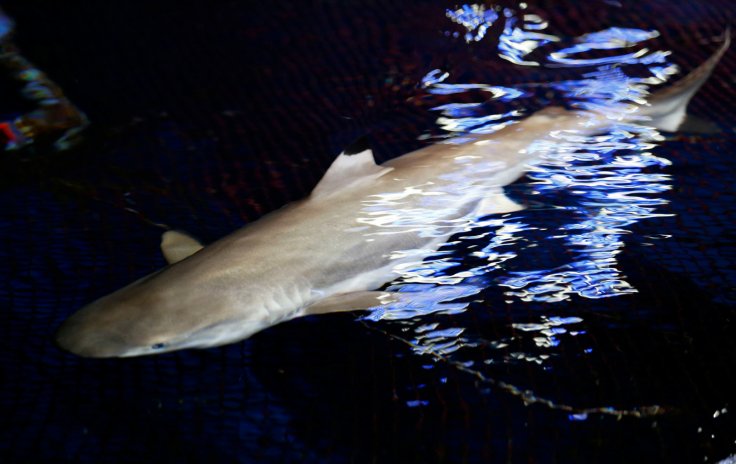
While thousands of black-tip sharks are gathering off the South Florida coast for their annual migration but scientists said the numbers are visibly shrinking compared to previous years.
Stephen Kajiura, a well-known shark researcher from Florida Atlantic University (FAU) has been observing and keeping track of these sharks for over eight years. To record the location of these marine predators, he used boat, plane, acoustic monitoring devices and even a drone.
Monitoring the migration of such sharks helps to understand the ecosystem and the health of the ocean, as these predators are responsible for preserving the coral reefs and seagrasses.
According to FAU researchers, depending on the water temperature black-tip sharks select their location. Usually, they come down to the south during the coldest month of the year, when the water temperature drops below 71 degrees Fahrenheit and when it starts to become warmer, they begin to move toward the north.
Kajiura, who is also a professor in the Department of Biological Sciences and a director of the Elasmobranch Research Laboratory in FAU's Charles E. Schmidt College of Science, said that in 2017 his team saw a "dramatic decline in the number of blacktip sharks that migrated south. In fact, it was so low that we estimated the population to be about one-third of what we have seen in previous years."
He mentioned that they wanted to make sure that these predators will return to South Florida, because if they don't, then "it will have a huge ecological impact in this region."
The research team led by Kajiura has used small transmitting devices, including web-accessible monitoring devices to receive data related to the migration pattern of the sharks in real time via email notification.
The team used other technically advanced tools to distinguish the sharks at South Florida's crystal clear nearshore waters. They captured some images of the sharks offshore published on Friday, March 2 and count the marine predators manually on a computer screen of their lab.
Kajiura said that his research assistant has personally counted "more than 100,000 sharks on the computer screen, which actually look like little black dots."
However, this team is not alone in terms of protecting the ocean's health, as the Oceania country Samoa has recently decided to create a huge shark sanctuary to stabilize the ocean's ecosystem and restore the shark population.
In 2009, the western Pacific Ocean nation Palau has created world's first shark sanctuary to protect the predators from being fished.









